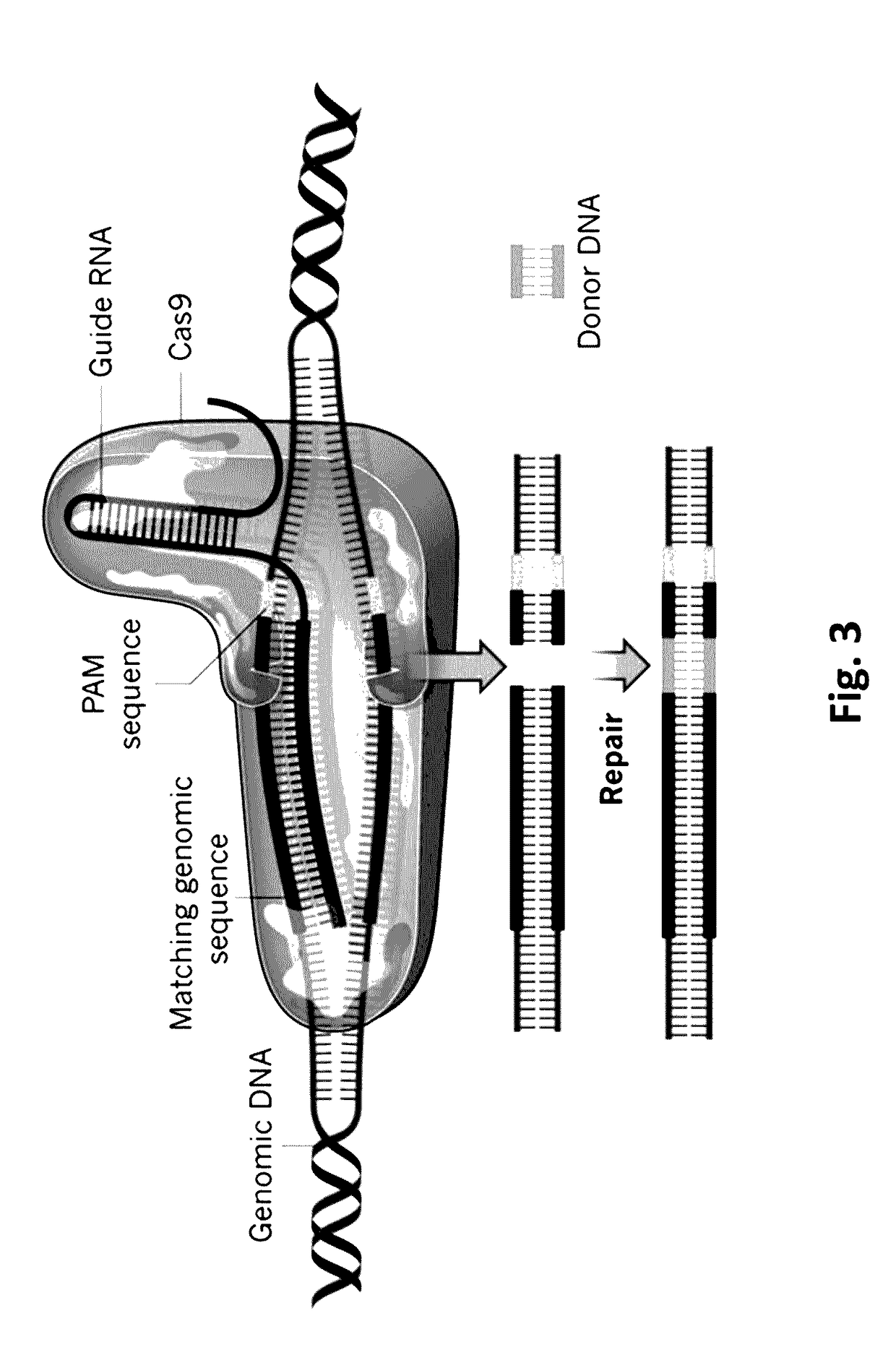Crispr/cas-mediated genome editing to treat egfr-mutant lung cancer
- Summary
- Abstract
- Description
- Claims
- Application Information
AI Technical Summary
Benefits of technology
Problems solved by technology
Method used
Image
Examples
example 1
Personalized Molecular Surgical Therapy of EGFR Mutations
[0153]We recently published a report describing CRISPR / Cas-mediated genome editing to treat EGFR-mutant lung cancer (Tang, H. and Shraer, J. B. 2016 EMBO Molecular Medicine 8: 83-85). While substantial progress has been made in the treatment of lung cancer with the development of tyrosine kinase inhibitors (TKIs) that target tumor-driving mutations in the epidermal growth factor receptor (EGFR), nearly all patients treated with TKIs ultimately develop drug resistance due to resistance-conferring genomic mutations. CRISPR / Cas9-mediated genome editing is a powerful new technique that allows precise changes to be made to cells' genomes. This technology is currently used widely in research laboratories, but it has yet to make an impact in the clinics. We have developed a clinical application for this technical advance, allowing personalized, molecular surgery to correct or destroy mutated EGFR. After detection of EGFR mutations in...
example 2
[0174]Reporter System for Screening for Effective gRNAs
[0175]We constructed a CRISPR reporter gene construct, which provides a rapid way to screen for a gRNA-mediated shift in reading frame or for a gRNA-mediated restoration of a reading frame. The reporter gene construct is a target template for editing by CRISPR / Cas gene editing. The reporter construct encodes a fusion protein comprising an EGFR amino acid sequence linked in-frame to red fluorescent protein (RFP). Referring to FIG. 6, A, insertion of a sequence, e.g., resulting in a fame shift or to include a stop codon, results in the expression of nonfunctional RFP. Conversely, repair of a mutant EGFR sequence can recover the reading frame of the fusion protein, resulting in expression of functional RFP. In FIG. 6, B, the reporter system demonstrates recovery of the reading frame of RFP following CRISPR gene editing using the De1G1 guide RNA.
[0176]While the present description sets forth specific details of various embodiments, ...
PUM
| Property | Measurement | Unit |
|---|---|---|
| Nucleic acid sequence | aaaaa | aaaaa |
Abstract
Description
Claims
Application Information
 Login to View More
Login to View More - R&D
- Intellectual Property
- Life Sciences
- Materials
- Tech Scout
- Unparalleled Data Quality
- Higher Quality Content
- 60% Fewer Hallucinations
Browse by: Latest US Patents, China's latest patents, Technical Efficacy Thesaurus, Application Domain, Technology Topic, Popular Technical Reports.
© 2025 PatSnap. All rights reserved.Legal|Privacy policy|Modern Slavery Act Transparency Statement|Sitemap|About US| Contact US: help@patsnap.com



